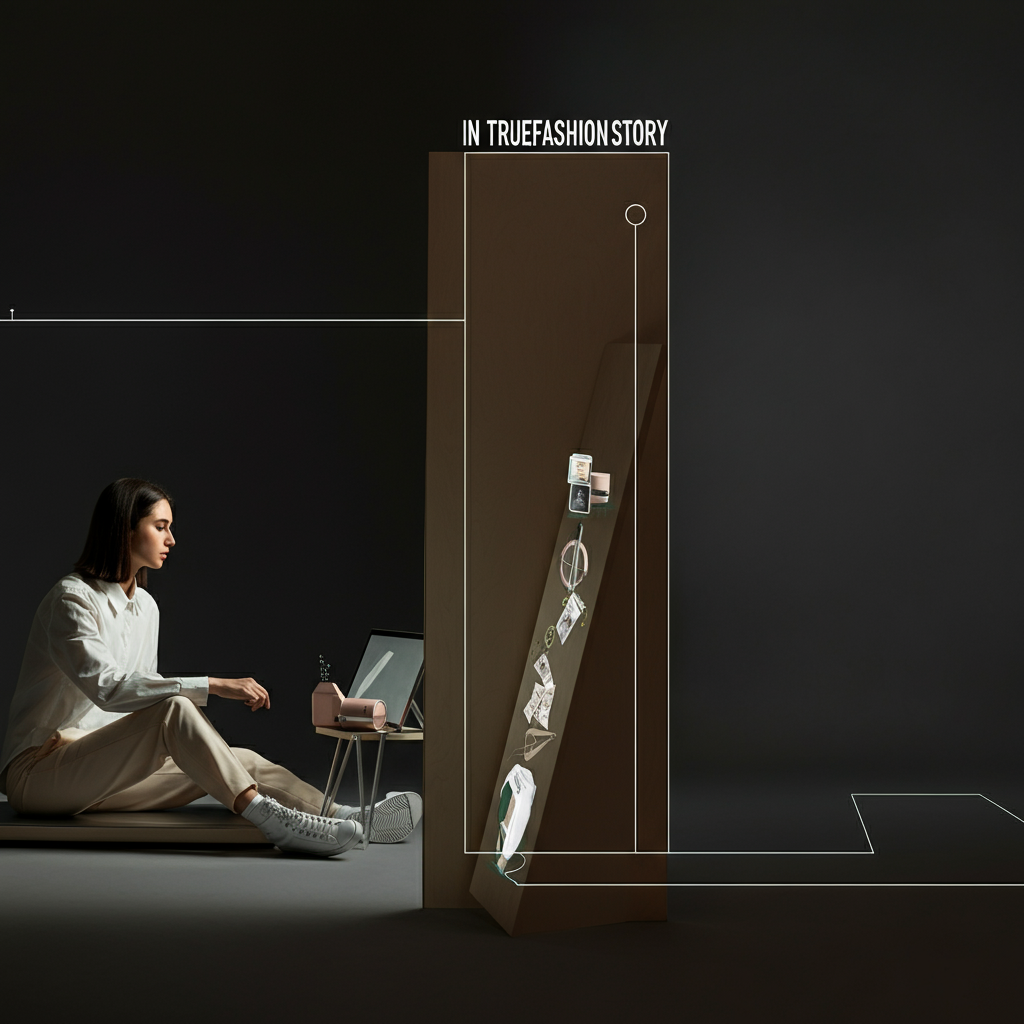Have you ever wondered what it really means when someone says “in true fashion”? This common phrase pops up everywhere, from everyday conversations to news articles and social media posts. Understanding this expression can help you communicate more effectively and recognize when others are using it to make a point about consistency or predictable behavior.
The phrase “in true fashion” describes when someone acts exactly as you’d expect them to based on their past behavior or established personality traits. It’s a way of highlighting that someone’s actions are completely consistent with who they are or how they typically behave. Throughout this article, we’ll explore various examples, examine how this phrase works in different contexts, and help you understand when and how to use it effectively in your own communication.
Understanding the Core Meaning of “In True Fashion”
What is an example of in true fashion? Let’s start with a simple scenario. Imagine your friend Sarah is always late to everything. When she shows up 20 minutes late to your coffee date, you might say, “Sarah arrived late, in true fashion.” This phrase emphasizes that her tardiness is completely predictable and typical of her character.
The expression works as a linguistic tool that connects current behavior to established patterns. It’s not just about describing what happened; it’s about pointing out the consistency between someone’s current actions and their known tendencies. This makes it particularly useful for storytelling, character development, and making observations about human behavior.
When you use “in true fashion,” you’re essentially saying, “This is exactly what I expected from this person because it matches everything I know about them.” The phrase carries a sense of inevitability, as if the outcome was predetermined based on the person’s established traits or habits.
The beauty of this expression lies in its versatility. You can apply it to positive traits, negative behaviors, or neutral characteristics. Whether someone is being characteristically generous, predictably stubborn, or typically creative, “in true fashion” captures the essence of their consistency.
Historical Origins and Evolution of the Phrase
The phrase “in true fashion” has roots in older English expressions that emphasized authenticity and consistency. Originally, “fashion” didn’t just refer to clothing styles but encompassed manner, way, or method of doing things. When combined with “true,” it created a powerful descriptor for authentic or characteristic behavior.
During the 18th and 19th centuries, writers frequently used similar constructions to describe characters who acted according to their established nature. This literary tradition helped cement the phrase in everyday language, making it a natural way to describe predictable human behavior.
The expression gained popularity because it offers a concise way to connect present actions with past patterns. Instead of explaining someone’s entire behavioral history, you can simply add “in true fashion” to immediately convey that the current behavior is typical and expected.
Modern usage has expanded the phrase beyond describing individuals to include organizations, groups, and even inanimate objects that behave predictably. This evolution shows how language adapts to meet our changing communication needs while maintaining its core meaning.
Common Examples in Everyday Situations
Personal Relationships and Family Dynamics
Family gatherings provide perfect opportunities to observe “in true fashion” moments. Consider Uncle Bob, who always tells the same fishing story at every holiday dinner. When he launches into his tale about “the one that got away,” someone might whisper, “There goes Uncle Bob, in true fashion, telling his fishing story again.”
Romantic relationships also showcase this pattern. If your partner always forgets to put the cap back on the toothpaste, and you find it open again, you might think, “They left the toothpaste open, in true fashion.” These moments highlight the predictable quirks that make relationships both challenging and endearing.
Friendships offer countless examples too. The friend who always suggests the same restaurant, the one who invariably shows up with homemade cookies, or the person who consistently offers to help others move – all demonstrate “in true fashion” behavior that defines their character.
Workplace and Professional Settings
Professional environments are goldmines for “in true fashion” examples. Every office has that colleague who always arrives early, stays late, or volunteers for extra projects. When they raise their hand for another assignment, coworkers might think, “There’s Jennifer, in true fashion, taking on more work.”
Leadership styles also create predictable patterns. The boss who micromanages every detail, the supervisor who always delegates effectively, or the manager who consistently supports their team – these behaviors become so characteristic that they’re easily described using “in true fashion.”
According to truefashionstory.com, workplace dynamics often reveal the most consistent behavioral patterns because professional environments tend to bring out established personality traits under pressure.
Celebrity and Public Figure Examples
Athletes and Sports Personalities
Sports provide excellent examples of “in true fashion” moments because athletes often develop signature moves, attitudes, or behaviors that become their trademark. When a tennis player known for arguing with referees gets into another dispute, commentators might say, “He’s challenging the call, in true fashion.”
Basketball players who always attempt difficult shots, football players known for their celebration dances, or golfers famous for their pre-shot routines all create opportunities for this phrase. These consistent behaviors become part of their identity, making “in true fashion” descriptions particularly meaningful.
Entertainment Industry Figures
Actors, musicians, and other entertainers often develop public personas that make their behavior predictable. When a notoriously private celebrity avoids the red carpet at a major event, entertainment reporters might write, “The star skipped the premiere, in true fashion, avoiding the spotlight.”
Musicians known for controversial statements, actors famous for method acting, or directors with distinctive visual styles all provide examples of how “in true fashion” applies to public figures whose characteristics are well-documented and expected.
Business and Corporate Examples
Company Behavior Patterns
Large corporations often develop reputations for specific approaches to business, customer service, or innovation. When Apple releases a product with premium pricing and sleek design, tech journalists might write, “Apple has launched their latest device with a hefty price tag, in true fashion.”
Similarly, companies known for aggressive marketing, exceptional customer service, or environmental responsibility create expectations that make “in true fashion” descriptions particularly relevant when they act consistently with their established reputation.
Industry-Specific Patterns
Different industries have characteristic behaviors that become predictable. When airlines announce flight delays during holiday travel, passengers might grumble, “The flights are delayed, in true fashion, right when we need them most.”
Retail companies that always offer massive sales during specific seasons, tech firms that consistently over-promise and under-deliver, or service providers known for excellent support all demonstrate industry-wide patterns that fit the “in true fashion” framework.
Literary and Media Usage
Character Development in Fiction
Authors frequently use characters who act “in true fashion” to create believable, consistent personalities. When Sherlock Holmes notices minute details that others miss, readers expect this behavior because it’s characteristic of his analytical nature. Writers might describe his observations as happening “in true Holmes fashion.”
This technique helps readers understand characters quickly and creates satisfying moments when characters behave exactly as expected. It also allows for dramatic irony when characters act against their typical patterns, making those moments more impactful.
News and Journalism Applications
Journalists often use “in true fashion” to provide context for current events by connecting them to historical patterns. When reporting on political figures, business leaders, or other public personalities, this phrase helps readers understand how current actions fit into broader behavioral patterns.
The expression also appears in sports journalism, entertainment reporting, and feature stories where establishing character consistency helps readers better understand the significance of current events.
Psychological Aspects of Predictable Behavior
Understanding Human Consistency
The reason “in true fashion” works so well as a descriptor is that humans are remarkably consistent creatures. We develop habits, preferences, and behavioral patterns that become ingrained over time. These patterns make our actions predictable to those who know us well.
Psychological research shows that personality traits remain relatively stable throughout adulthood, which explains why we can often predict how someone will behave in specific situations. This consistency is what makes “in true fashion” such an effective communicative tool.
Social Recognition and Expectations
When we use “in true fashion,” we’re acknowledging our ability to recognize patterns in human behavior. This recognition serves important social functions, helping us navigate relationships and set appropriate expectations for future interactions.
The phrase also reflects our natural tendency to categorize and predict behavior based on past experience. This cognitive shortcut helps us make sense of complex social situations by connecting current actions to established patterns.
Table: Common “In True Fashion” Scenarios
|
Context |
Example Person/Entity |
Typical Behavior |
“In True Fashion” Moment |
|---|---|---|---|
|
Family |
Grandma Rose |
Always brings homemade pie |
Shows up with apple pie at surprise party |
|
Workplace |
Perfectionist colleague |
Reviews everything multiple times |
Asks for third revision on simple email |
|
Sports |
Aggressive hockey player |
Gets into fights frequently |
Starts brawl during championship game |
|
Business |
Luxury brand |
Maintains high prices |
Refuses to offer discount during recession |
|
Entertainment |
Method actor |
Stays in character between scenes |
Lives as character for months during filming |
|
Politics |
Populist politician |
Makes bold promises |
Proposes unrealistic policy during campaign |
When to Use “In True Fashion” Effectively
Appropriate Contexts and Timing
The phrase works best when your audience already knows the person or entity you’re describing. Without this context, “in true fashion” loses its impact because readers can’t appreciate the consistency being highlighted.
Use it when you want to emphasize predictability, especially in storytelling or when making observations about character. It’s particularly effective in informal writing, personal narratives, and situations where you’re trying to create a sense of familiarity or inevitability.
Tone and Audience Considerations
Consider your tone carefully when using this phrase. It can sound affectionate when describing endearing quirks, mildly critical when pointing out annoying habits, or admiringly when highlighting positive traits. The context and your relationship with the subject determine how the phrase will be received.
Your audience should have enough background knowledge to understand why the behavior is characteristic. In professional or formal writing, you might need to provide additional context to ensure the phrase achieves its intended effect.
Alternative Expressions and Variations
Similar Phrases and Their Nuances
Several expressions convey similar meanings to “in true fashion.” “As usual” suggests routine behavior but lacks the emphasis on character consistency. “Predictably” indicates expected behavior but doesn’t carry the same sense of defining characteristic.
“True to form” is perhaps the closest alternative, emphasizing that someone is acting according to their established nature. “Characteristically” serves a similar function but sounds more formal and academic than “in true fashion.”
“In typical fashion” conveys nearly identical meaning but lacks the emphasis on authenticity that “true” provides. Each variation offers slightly different connotations, allowing writers to choose the expression that best fits their tone and context.
Regional and Cultural Variations
While “in true fashion” is widely understood in English-speaking countries, some regions prefer alternative expressions. British English speakers might use “in characteristic fashion” more frequently, while Australian English might favor “as expected” in casual conversation.
Understanding these regional preferences can help you communicate more effectively with different audiences and choose expressions that resonate with your specific readership.
Common Mistakes and Misunderstandings
Overuse and Loss of Impact
One common mistake is using “in true fashion” too frequently, which dilutes its impact. The phrase works best when used sparingly to highlight particularly characteristic moments or behaviors that perfectly exemplify someone’s nature.
Avoid using it for every predictable action, as this makes your writing repetitive and reduces the phrase’s effectiveness. Save it for moments when the consistency between past and present behavior is particularly notable or significant.
Inappropriate Applications
Don’t use “in true fashion” for behaviors that aren’t truly characteristic or for people your audience doesn’t know well. The phrase requires established context to be meaningful, so using it for random or isolated incidents confuses rather than clarifies.
Also avoid using it in overly formal or academic writing where more precise language might be preferred. The conversational tone of “in true fashion” makes it better suited for informal contexts and personal narratives.
Key Takeaways
Understanding “in true fashion” enhances your ability to recognize and describe consistent human behavior patterns. Here are the essential points to remember:
- The phrase connects current actions to established behavioral patterns
- It works best when your audience knows the person or entity being described
- Context is crucial for the phrase to achieve its intended impact
- It can convey various tones depending on the situation and relationship
- Overuse diminishes its effectiveness, so use it selectively
- Alternative expressions exist but each carries slightly different connotations
What is an example of in true fashion? The answer depends on the context, but any situation where someone acts exactly as you’d expect based on their known characteristics qualifies. Whether it’s your always-punctual friend arriving early, your risk-averse boss choosing the safe option, or your adventurous sibling planning another spontaneous trip, these moments of predictable consistency perfectly illustrate the phrase’s meaning.
Frequently Asked Questions
What does “in true fashion” mean exactly?
“In true fashion” means someone is acting exactly as you’d expect them to based on their known personality traits, habits, or established behavior patterns. It emphasizes consistency between past and present actions.
Can I use “in true fashion” for positive and negative behaviors?
Yes, the phrase works for any characteristic behavior, whether positive, negative, or neutral. The key is that the action must be typical and predictable for the person being described.
Is “in true fashion” appropriate for formal writing?
While not incorrect in formal contexts, “in true fashion” has a conversational tone that makes it better suited for informal writing, personal narratives, and casual communication.
How is “in true fashion” different from “as usual”?
“As usual” simply indicates routine behavior, while “in true fashion” emphasizes that the behavior is characteristic of the person’s essential nature or established personality traits.
Can I use this phrase for organizations and companies?
Absolutely. Organizations, companies, and even countries can act “in true fashion” when their behavior matches their established reputation, values, or typical approach to situations.
When should I avoid using “in true fashion”?
Avoid using it when your audience doesn’t know the person or entity well enough to understand why the behavior is characteristic, or when describing isolated incidents that don’t represent typical behavior.
Conclusion
“In true fashion” is more than just a common phrase – it’s a powerful tool for highlighting the fascinating consistency of human nature. By connecting present actions to established patterns, this expression helps us communicate complex ideas about character and predictability in just three simple words.
Whether you’re describing a friend’s habitual lateness, a company’s typical business practices, or a celebrity’s predictable public behavior, understanding how to use “in true fashion” effectively will enhance your communication skills. The phrase allows you to create immediate understanding and connection with your audience by drawing on shared knowledge and expectations.
Remember that the most compelling examples of “in true fashion” moments come from careful observation of the people and organizations around you. As you notice these patterns of consistency in daily life, you’ll find countless opportunities to use this expression in ways that add depth and meaning to your communication.
The next time someone acts exactly as you expected them to, you’ll have the perfect phrase to capture that moment of beautiful, predictable human consistency – in true fashion.





